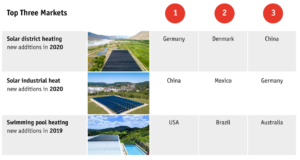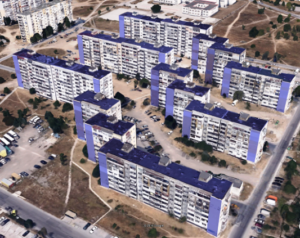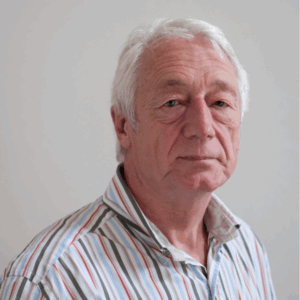Bulgaria: Solar District Heating Becomes Realistic Option
April 28, 2016
 Paradoxical: Although abundant sunlight is usually associated with southern Europe, the most solar district heating (SDH) plants in Europe are located in the north, mainly in Denmark, but also in Norway and Sweden. Milan Rashevski, a Bulgarian architect from the non-governmental Institute for Zero Energy Buildings (IZEB), now intends to establish this kind of energy supply in his country too. “We have round about 25 % more sunshine than Denmark, so what works there should be possible here as well,” he said. With the support of Danish organisation State of Green, Rashevski and his IZEB colleagues visited some of the largest SDH plants in Denmark last year.
Paradoxical: Although abundant sunlight is usually associated with southern Europe, the most solar district heating (SDH) plants in Europe are located in the north, mainly in Denmark, but also in Norway and Sweden. Milan Rashevski, a Bulgarian architect from the non-governmental Institute for Zero Energy Buildings (IZEB), now intends to establish this kind of energy supply in his country too. “We have round about 25 % more sunshine than Denmark, so what works there should be possible here as well,” he said. With the support of Danish organisation State of Green, Rashevski and his IZEB colleagues visited some of the largest SDH plants in Denmark last year. Additionally, IZEB invited Danish experts to share their knowledge and experiences at a conference held in the Bulgarian capital of Sofia in November 2015. The conference brought together interested representatives from a variety of businesses as well as local and national authorities. “We have been fortunate to have had Danish partners willing to support us in our attempt to achieve large-scale deployment of solar thermal energy in Bulgaria,” Rashevski said.
Together with organisations from around a dozen European countries, IZEB is part of Horizon 2020 project SDHp2m, an initialism for Solar District Heating and actions from Policy to Market. Over the course of the project, IZEB will create a study to show how solar district heating can be set up successfully in Bulgaria. “Furthermore, we are looking for partners from NGOs, companies and municipal administrations who want to join our project,” Rashevski added. The architect thinks that SDH is a suitable and favourable option – not so much for the energy supply of big cities, such as Sofia, Plovdiv or Varna, but rather for the supply of smaller towns, villages, city districts or even single blocks of flats.
Limited autonomy makes job in Bulgarian municipalities difficult
IZEB is proposing a two-phase approach in Bulgaria: At first, solar collectors should only be used to heat water, without long-term storage tanks in place. But then, seasonal heat storage units should be set up underground to store energy generated in spring and summer for use in autumn and winter. Solar thermal energy combined with other renewable energy sources like biogas will be sufficient for heating and cooling buildings, Rashevski believes. “Until the end of the year, we plan to realise a pilot project in a school to show that the precept is valid. Here, energy collected over the August holidays will be used when the children return to school in September.”
Whereas Danish SDH plants are often owned by municipalities or citizens organised in associations, things look quite different in Bulgaria. It was a major problem that Bulgarian municipalities had only limited autonomy and that they were dependent on the federal government to grant them money for an investment, Rashevski explained. The IZEB experts hope for private rather than public investors in SDH projects. “A possible scenario could be: Financial institutions grant low-interest loans, which will be paid off by the money saved on the energy bill.” Rashevski estimated the amortisation period for such projects to range between 9 and 11 years.
Bulgaria has recently seen the start of a large-scale governmental rehabilitation project. Some hundred blocks of flats are planned to undergo energy-efficient renovation for Bulgarian Lev (BGN) 1 billion (EUR 500 million). Solar thermal energy, however, can rarely been seen on the project plans. “We submitted our proposals, but were not heard,” Rashevski regretted. “It´s a pity that almost only old-style rehabilitation measures will be implemented, whereas innovative solutions like solar thermal energy won’t.” Most Bulgarians have no idea that solar thermal is a type of energy with good prospects. They think that renewable energy in general is expensive and they don´t distinguish between solar thermal and photovoltaics. “Increasing awareness is very important to us and we regard it as one of our institute’s crucial task going forward,” Rashevski said.
Websites of projects and institutions mentioned in the article:
Institute for Zero Energy Buildings: http://www.izeb.eu
Solar District Heating: http://www.solar-district-heating.eu/SDHrelatedprojects/AboutSDHp2m.aspx
State of Green: https://stateofgreen.com/


